The 50 States Project is a series of candid conversations with interior designers across the country about how they’ve built their businesses. This week, Birmingham, Alabama–based designers Anna Still and Marguerite Johnson of Still Johnson Interiors tell us how they carved out their own niche in a traditional market, why they furnish every project using entirely custom furniture, and why they can’t imagine running their business without one another.
How did the two of you meet, and what made you decide to launch your firm together?
Anna Still: Marguerite and I met while working for Betsy Brown here in Birmingham. I grew up here, and had worked for other interior designers in Atlanta and Houston throughout my early career. When I got married and moved back, my dream was to work for Betsy. She has a storefront office next to an ice cream shop in this cute little village, and I had always peeked in. Plus, she had the most interesting house in town. So, when I moved back, I applied and started working for her, and I worked there for almost eight years.
Marguerite Johnson: I discovered Betsy Brown when I was an intern at an architecture firm in Charlotte. She was the designer on the project, and it was just the most incredible house I’d ever seen. I was like, “Who is this? I have to work for her.” I moved back to Jackson, Mississippi, where I’m from, and I worked a bit there, and then I applied and got a job at Betsy’s firm. I was there for five years with Anna—we started working together and were in a really good flow, and then we left to start Still Johnson in 2021.
What did you see in each other that made you feel like the partnership was the right fit?
Johnson: We have different strengths. And we could read each other’s minds—I could walk into the room and I just knew what Anna was about to do, and she knew what I was about to do.
Still: Marguerite and I worked on tons of projects together, and we realized that our strengths complemented each other. My dream was always to start my own business and have my own design firm, but I’m not as creative as I wish I was. I am creative to a point, but not like Betsy and Marge, where they’re thinking of things that have never been thought of before. I always say they’re like mad scientists. You know, when Marge puts together a scheme for a client, it’s not like she’s going through coffee table books and Pinterest—it just comes to her, and it’s pure creativity. I’m more of the spreadsheet-type person. I’m really organized and good at the project management side of things: placing orders and making sure the project stays on track and communicating with the architect and the builder.
Because a lot of Betsy’s projects were out of town, Marguerite and I were traveling together too. At one point, we were driving down to Alys Beach [in Florida] to work on a project for Betsy, and I was like, “Have you ever thought about starting your own business?” Marge was like, “What?!” And I said, “Well, you know, it’s just something that’s been on my mind lately. I feel like we could totally do it.”
Johnson: And we were getting to a point where it just felt natural. We kind of tabled it after we talked about it—we were like, “It’s just not the right time.” And then a few months later, it was like, “Wait, actually, this is the right time, and this is the right move.” It just felt like that was meant to happen.
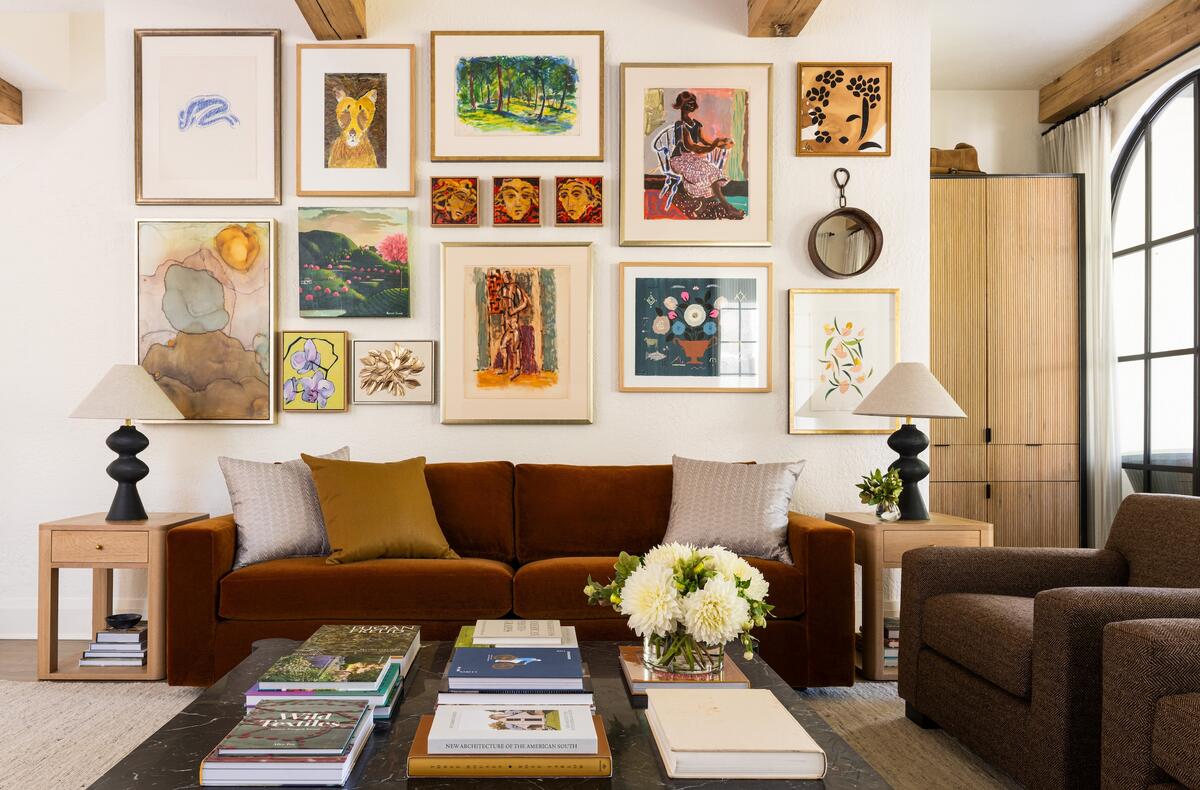
What made you think the timing was right to leave and start your own firm together?
Still: If I played the game imagining that I was a client with an unlimited budget, I couldn’t think of anyone I would hire to design my house in Birmingham other than Betsy or Marge. That was a sign. Don’t get me wrong: There are a ton of interior designers in Birmingham that are doing great, beautiful work—but I realized that [the kind of work] that spoke to me [was far more rare].
Johnson: Anna is 38 and I’m 31, and we were getting to the age where our contemporaries needed a designer but Betsy wasn’t taking on that kind of work. She was taking on out-of-state clients with big budgets and humongous houses.
Still: There would be these great projects where someone would reach out and be like, “Would you do this on the side?” And I was like, “Oh, this is so painful, but no, I don’t take on work outside of Betsy Brown.” But those people wouldn’t actually call Betsy, because she was out of reach. It was so hard to leave Betsy because we really, really loved her—we hated to do it, and we still miss her all the time. In some ways, I think I could have stayed there my whole life. But I also think if I had turned 45 and was still working for someone else, I would have felt like I had let myself down.
You launched at a wild time for the industry, in terms of the demand for design services but also immense procurement challenges. What was that initial startup mode like?
Still: I was so ready to do it. I felt like I was either going to start my own interior design firm, or start a consulting firm on how to run an interior design firm.
So often, designers in this series tell me they wish they had worked for someone else before starting their own firm. This feels like a testament to that path.
Still: I had tried all of the different software. I knew how to do a large installation flawlessly. That felt totally comfortable because I had been doing it in an assistant role for so long, so I wasn’t scared at all.
What were the biggest challenges at the beginning?
Johnson: On the creative side, there are so many unknowns when we’re working through projects. There are so many nuances to making these decisions, and I would think to myself, “Why didn’t I ask Betsy that question?” or “How did Betsy know that was the correct answer?”
What kinds of answers were you looking for?
Still: Marge makes such a good point. We were completely prepared to open a business: We had been project managers for so long that we felt like we could do it in our sleep. But the things that were hard were the things where there was no “right” answer, because we always had Betsy to give us that answer. We would sometimes be in tears in those first projects, trying to figure out which floor plan we wanted to show our client because there were three good answers. It was like, “Can we just get Betsy to come over here and tell us which one?”
Johnson: And it was scary.
Still: To put it in a word, we no longer had a boss. We were the boss now, so the buck stopped with us. And making that final decision: Do we make this sofa in something safe, or do we go with something edgy and different? That was on us for the first time. For example, say we’re doing a floor plan for a primary bedroom. Do we run the rug under the bedside tables or in front of them?
Johnson: And a lot of it has to do with the look you want—is it a traditional home, or is it a more modern home? There are so many questions that don’t have a single correct answer. But as we keep moving forward, we’re able to say, “Well, this was successful here. Let’s try it again.” Or maybe we’re saying, “This was successful here, but let’s try a new way.” I think we’ll always have questions: “Are we ready to take this risk?” “Is this the right client for this room?” But in time, we’ll be more confident in making those choices and taking those risks.
Does that feeling of doubt go away with time?
Still: In some ways, I think it’s just part of the job. I remember seeing Betsy in agony trying to get the floor plan right—she would work on it for days. I just think that the responsibility for the final decision is on us now. I also think a lot of it has to do with the fact that, like, Marge and I try to push the envelope. If we played it safe, or if our look was always the same, maybe we’d have a set answer for everything and we wouldn’t come across these situations. But for us, there’s something different every time.
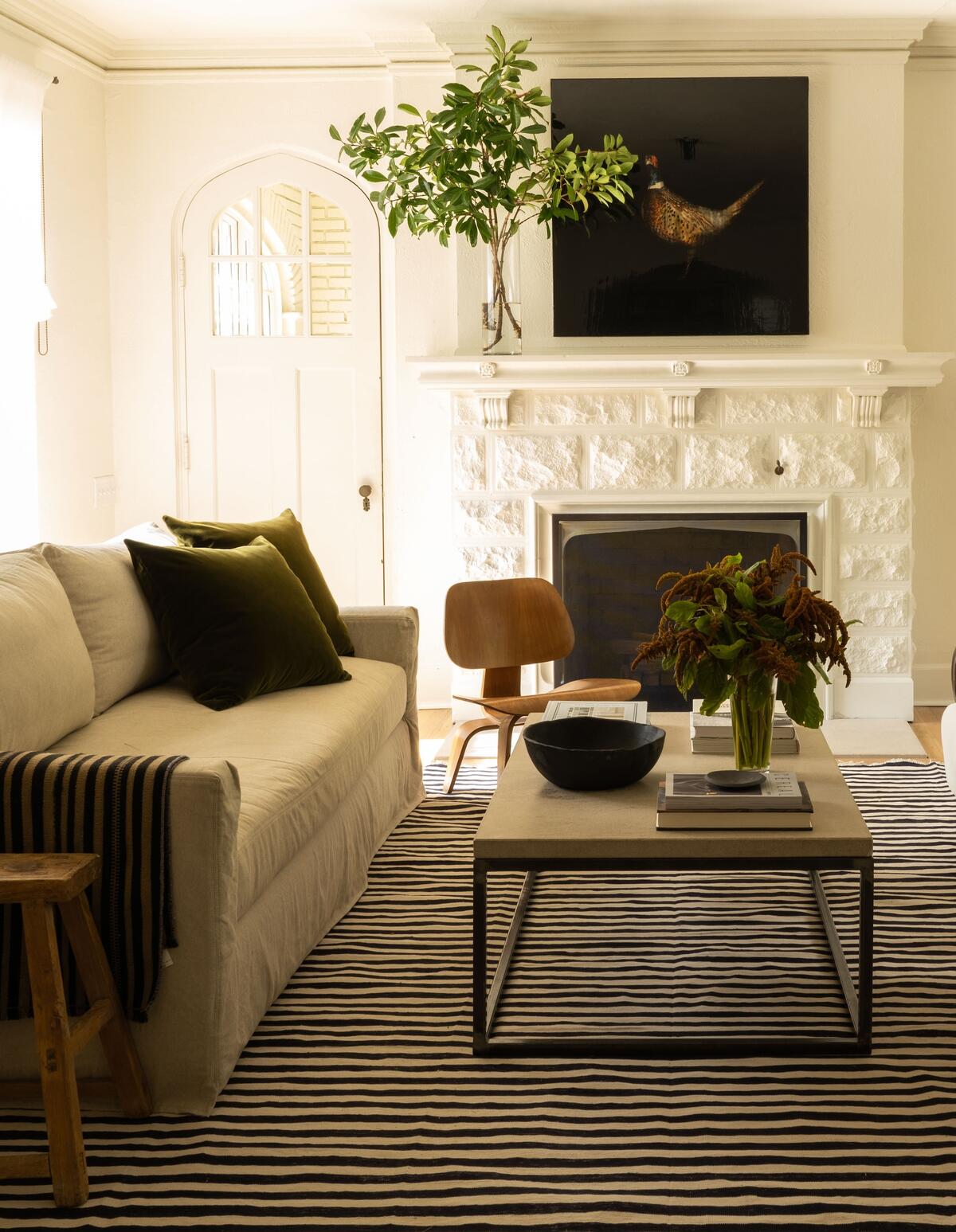
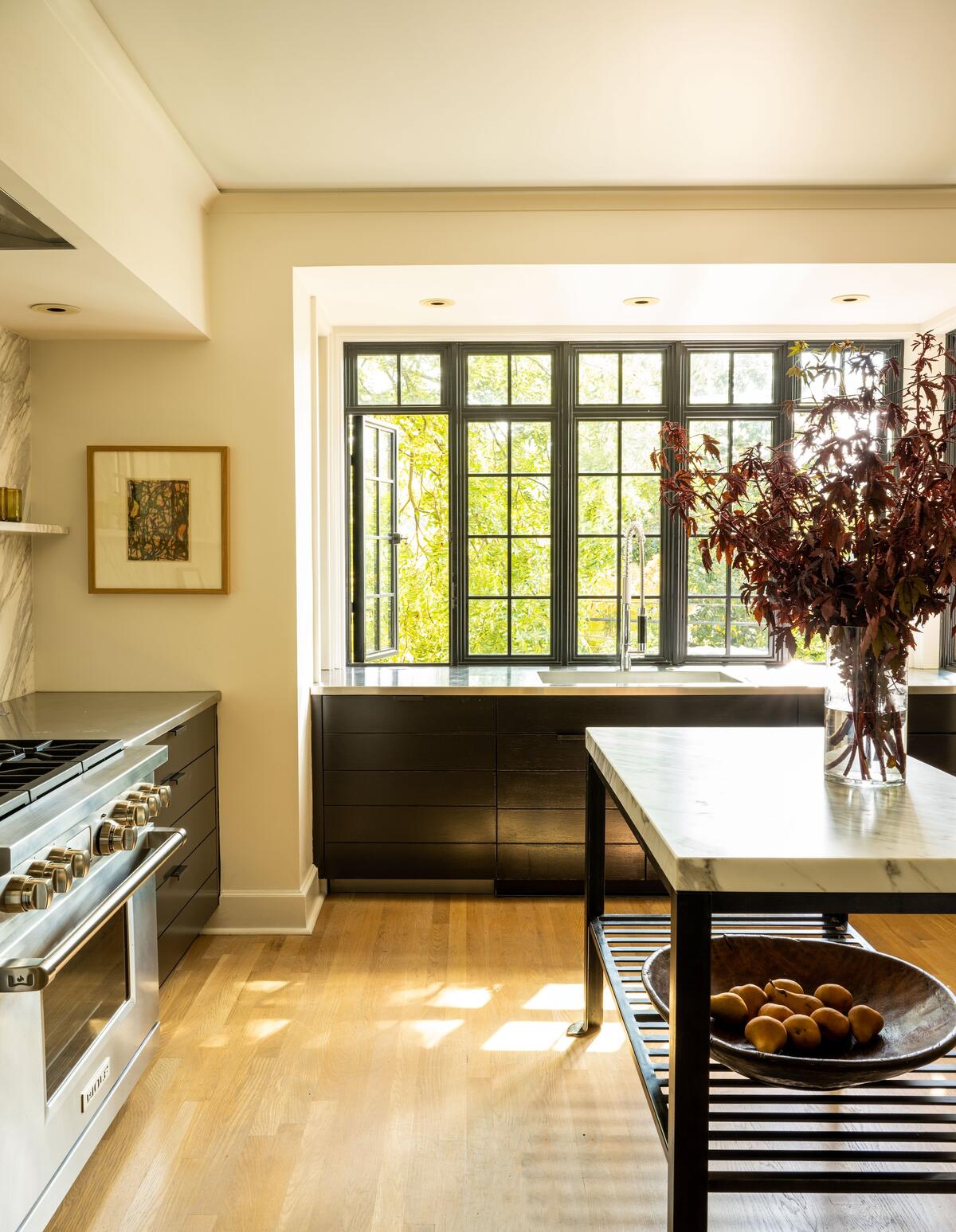
What does your business look like today?
Still: Our business right now is twofold: We started the firm in July 2021 and then opened a shop [by the same name] in downtown Birmingham in March 2022. The storefront was a pet project—it gives us an excuse to buy things we see and love but don’t necessarily have a client [in mind for it]. It’s also a way for us to introduce ourselves to clients. It’s also just fun. There’s no client on the other end, so it’s like, “Take it or leave it. If you don’t like this table, then don’t buy it.”
Johnson: We’ve gotten some really cool projects from it. Designers also stop in all the time and shop, so it’s fun to be connected to the design community through it. And we’ve been able to collaborate with other artisans on special products for the shop, and a lot of the artisans are in the South, which is cool.
Still: We specifically try to avoid anything we can buy at a furniture market, because there are people in town who are already doing a really good job at that. So, for us, the furniture is vintage—it’s stuff we’ve found [while] shopping for clients. And then we have a ton of art, mostly vintage and some from artists we’ve met. We have small accessories, but it’s stuff that we’ve designed with local artists. There are a lot of bowls by Civil Stoneware, which is just down the street from us; we have lots of plates from Pearl River Glass, a stained glass company in Jackson that Marge designs plates with; and tons of coffee table books. If we come across a cool fabric, we’ll just go ahead and get a couple of pillows made.
Johnson: And lamps. Lots of lamps.
Still: We don’t have enough foot traffic that we have to be ringing people up all the time. It’s not by appointment only, but it almost feels like it is, because usually, a designer in town will call and be like, “Hey, do you mind if I stop by?” It’s just the right amount of foot traffic for us to focus on our “real” jobs.
How did your team take shape?
Still: We have four people—accountants and design assistants. First, we needed help placing orders and doing all the legwork [of procurement, execution and installation]. I was doing all the bookkeeping, but I realized that was taking me away from developing the business and doing more project management, so now we have two part-time bookkeepers. And that took a lot off my load.
Johnson: It’s been fun to have more people around and have a new team dynamic.
Where did your early projects come from?
Still: We got so lucky. I left Betsy’s a month before Marge did because Marge was wrapping up one last project. And the day I left, [an acquaintance] called me and said, “Hey, I’m living in Brooklyn right now, but we were down in Birmingham so much during Covid that we’ve decided to move there. We already have a house, and I’m looking to just do the whole house right now. We’re moving tomorrow, and I’m pregnant with my third child.” If we got that call now, we would probably say no, but it was the perfect timing for a full-house project that needed to start tomorrow. She is an actress, so she has followers on Instagram and the project ran in Domino, which was all great.
Johnson: It was a great project. But if she called today, we would’ve had to say we’re not available till summer 2024.
Still: Right, it would be a timing problem. And at the exact same time, Betsy sent us a really big project in Atlanta. It was kind of messy, because the client was moving from one huge house—the biggest house I’ve ever been in—to a smaller house, so part of the job was figuring out what we could use from this huge house and what needed to be purchased. Again, it’s a project that we would probably say no to now because there was so much existing furniture that we weren’t really able to put our own mark on it, but it was perfect for starting a new business, and it got us rolling. Now we’re pretty much just taking on full-house projects. Because we’re younger, I think people assume that we’ll take on a smaller project, but we’re a little bit overwhelmed with work right now.
Johnson: We also added a minimum. Looking at all of our projects, I think we’re reaching the market of the clients that are the right fit for us.
Still: We’re pinching ourselves that when people reach out with a couple of rooms they would like us to work on, we’re at a place where we can say, “I wish we could. That sounds so fun. But we really are only taking on full-house projects.” Three years in, I feel so lucky to be in that position.
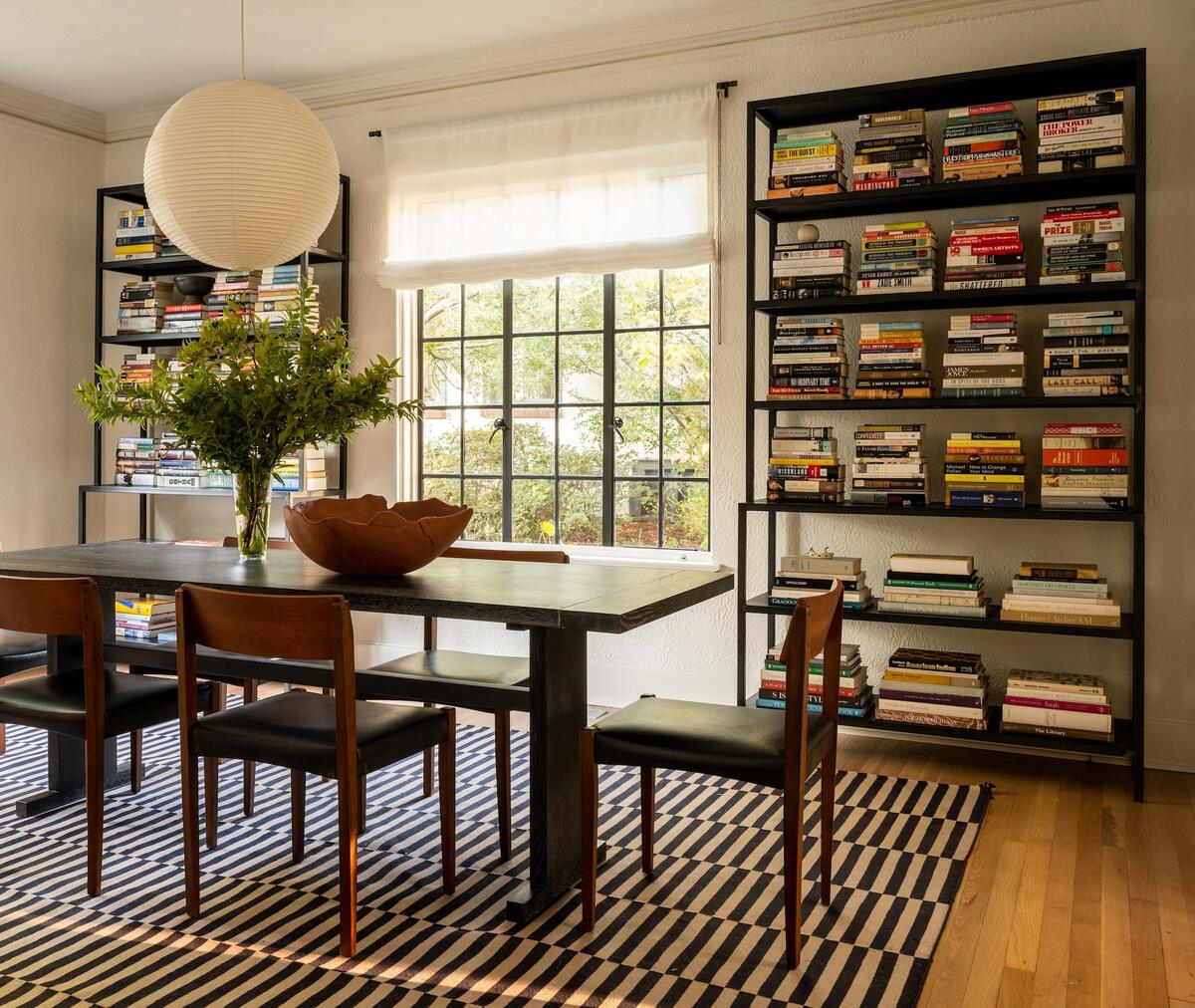
What is a full plate for the firm today?
Still: We have 15 projects right now, and there are probably three in the queue that I haven’t even made a document for—they’re waiting for us to set a date on the calendar to come look at their house. Four to five full-house installations per year would be ideal for us, and that makes sense looking at our open projects right now—some of them have already been installed and we’re just doing the last layers, and then some are two years out. That gives us enough work to keep us busy, but it’s also [manageable] enough that we can be thoughtful about each project.
What gets lost if there are too many projects going at once?
Still: Unfortunately for us, we like to do things differently every single time. We like to do all custom furniture—the sofas and the soft goods are all from custom workrooms. We try not to buy anything ready-made, so we’re reinventing the wheel every time.
Is the promise that “this is all going to be one of a kind” a real selling point?
Still: Yes, and I think we are matching with the types of clients who are interested in that. Marge does a great job with our Instagram to show the work that we have put out so far, and our shop hopefully shows that nothing will feel like something you’ve seen before.
Johnson: [Our clients] want something different and for their house to be unique. It’s about finding that perfect piece in New York that will be the star of the room, and collecting art together, and shopping for antiques—they want to be a part of this process and get excited about collecting those things, and we’re happy to do that.
Still: That’s why we kind of keep our project load low—we have to make a work order or rendering for everything. Like, if I’m placing orders and I come across something I can just click and buy, I’m like, “Woohoo!” But that’s less than 10 percent of what’s in our projects.
Where do you collaborate, and where do you work separately?
Still: Mainly, Marguerite does the design work, and I do project management. It’s pretty evenly divided in that way. I mean, Marge will come to me for my opinion, but the only time I really get involved on the design side is when I’m raining on her parade—where she’s just like, “Let’s do this,” and I’m like, “OK, this is just too crazy. We cannot, in the middle of Birmingham, Alabama, do this.”
Johnson: Anna will start the project, run the logistics side and all the communications—when we start having meetings with the architects, she’s driving that. Then it evolves into the design phase, so we start pulling images. We both pull a ton and present them to the client to see where they land. Anna’s a lot better and faster at getting in the client’s head than I am. It takes me a little bit longer because I’m usually stuck on what I want to do and not what the client wants to do.
Still: It’s so funny, because sometimes Marge will put together her initial scheme and it’s like it’s what the client wanted, but if it was Marge’s house. And then I’m like, “But Marge, that’s not Susan’s look.” I’ll go find a coffee table book, or a fabric—in this case, it was a midcentury client, and I found some tapestry that would be on a kimono, and I was like, “This is Susan.” And Marge was like, “OK, I got it. I got it. I got it.”
Johnson: It takes a minute, but I get there!
Still: I often help Marge get into the client’s head—and once Marge becomes the client, she takes over. She’ll do a mock presentation for me, and I’m always like, “Oh, my gosh, I love it. How do you do it every time? This is incredible.” And then I’ll take back over on pricing and buying.
Johnson: Anna does reviews on the floor plans, too, to make sure that we’re executing correctly. And we’re really sounding boards for each other all the time—we ask questions all day long. We’re always saying we don’t know how people do without a business partner, because having a second opinion is so crucial for us.
Still: We used to have separate offices, but recently I’ve moved my desk to be right next to Marge. Now we talk constantly.
How have you approached billing to make the business profitable?
Still: We bill clients for our design time. Since we’re a partnership, we decided that if we’re both working on something together—like, say Marge and I are working on a presentation together—we don’t double-bill; we’ll just bill that as one person. We didn’t want to penalize people for going with a firm that had partners. Then we bill for other people in the office at a lower rate. Once a month, we send out a bill to our clients for the design work and support work.
If anyone in the office could do [a task], it’s [considered] support work. But if only Marge or only I could do it, then it’s design work and at a higher rate. We also mark up products, but we always bill at retail if there’s a retail price that’s lower. A lot of the time, the client ends up getting a price that’s lower than retail. We make a proposal for everything in the house—I’m obsessed with getting everything on the proposal, because I want the clients to understand the bottom line. It might be like 13 pages long, but it will have every single item that we’re going to bring to the house. And even if there’s an item we haven’t selected yet—if we haven’t found the perfect antique chest—I’ll still put “antique chest waiting to be selected” so they know that that money is coming. So, we put together a full proposal, down to the bath mats, and then we request a 75 percent deposit, which usually covers what it takes for us to purchase all the items. And then we collect the remaining balance before the installation.
Even at the beginning of a project, we try to be really clear about how much we think the project is going to cost. We’ll show a client exactly what other projects have cost, including installation, shipping and all that—and if it knocks their socks off in our first conversation, well, I would much rather have that happen in our first conversation. Working for others over the years, we’ve learned how to not have any hurt feelings over money, because we’ve learned how to be upfront.
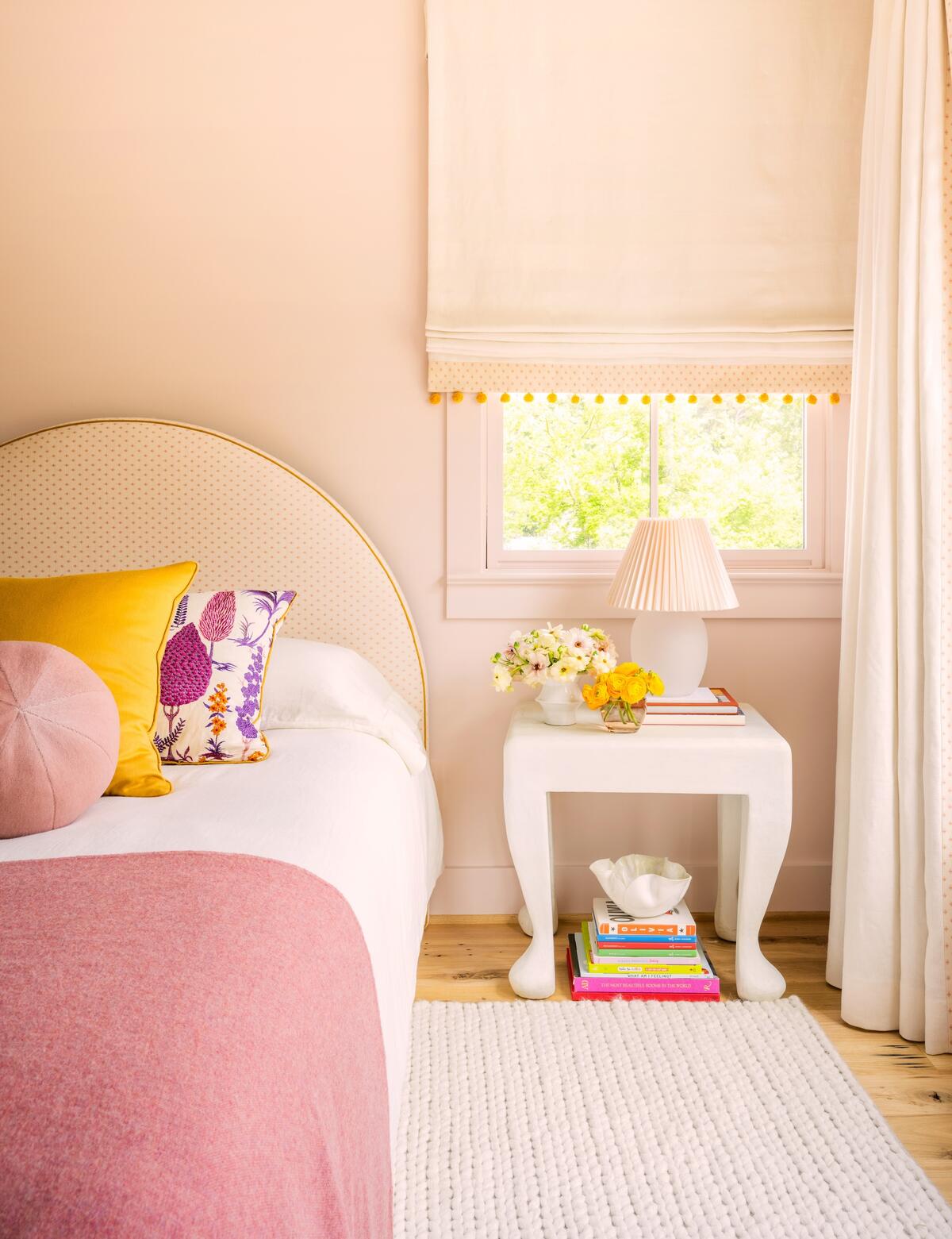
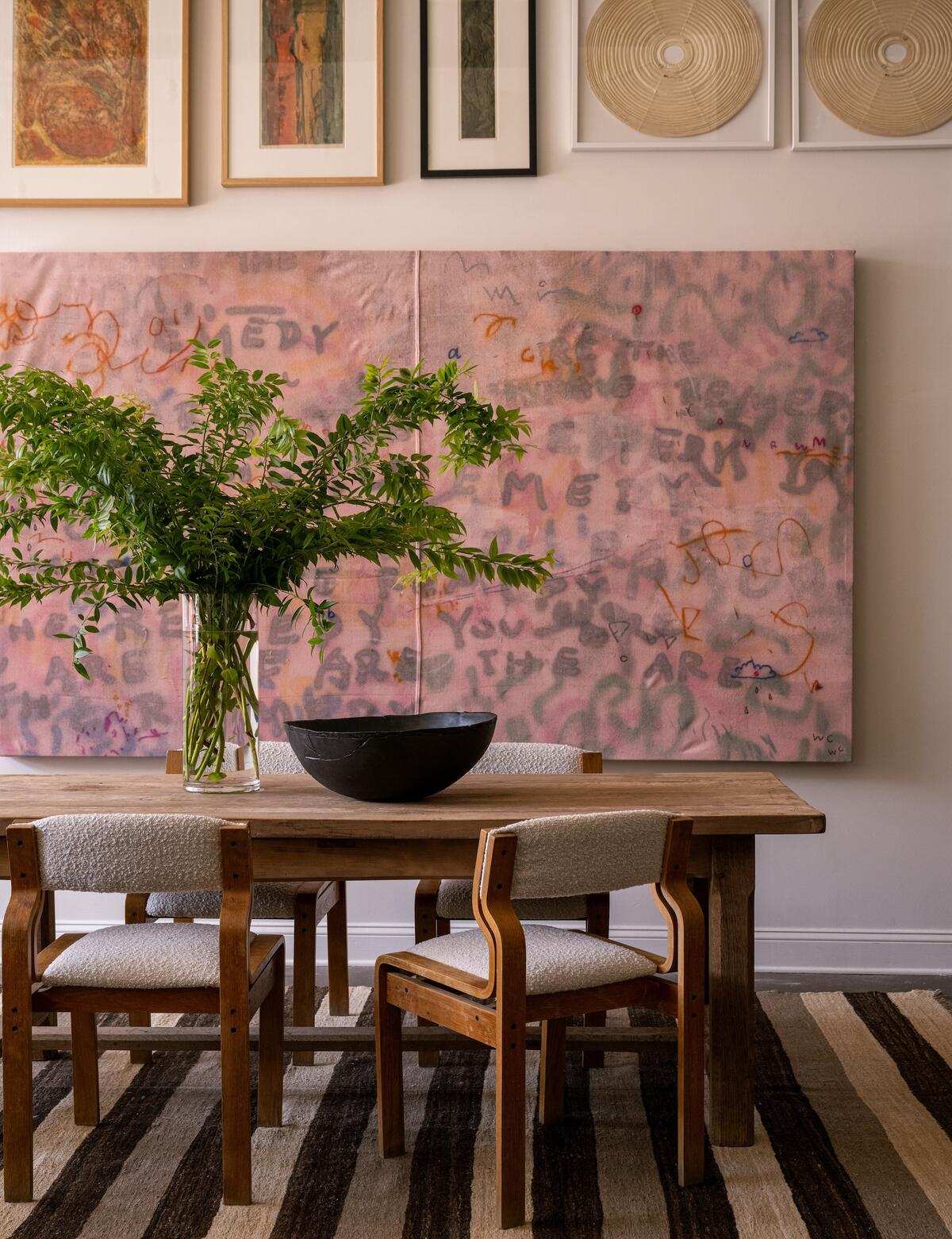
Birmingham has such a robust design scene. How does that impact the opportunities for your firm?
Still: Birmingham has beautiful architecture, so we’re lucky—I mean, the houses are just gorgeous, so we have this built-in inspiration.
Johnson: My understanding is that our city’s design community really grew out of the Auburn [University] architecture program, which created this great architecture.
Still: There are a lot of Bobby McAlpine alumni who work here.
Johnson: Yes, and they’ve now spun off and have their own looks, which creates this bubble of great architecture, which has then bred incredible design firms all over the city.
Still: I lived in Houston for a while, and there were like 10 pretty houses. But here, you can find beautiful historic homes everywhere you look. I will say that Birmingham is very traditional in terms of what people are looking for in a designer, and there are a lot of very traditional designers here who are doing a really good job. But that helped us, too, in the sense that there aren’t that many people doing something less traditional.
Johnson: That’s where we sort of stepped in.
Where do you see opportunity to grow in the year to come?
Johnson: With our store. We’re always talking about how we get to the next level. Do we need to go overseas to go shopping?
Still: The sky’s the limit with the shop. You know [the New York shop] Guild at Roman and Williams? There’s just this untapped potential with our store, because there’s nothing in Birmingham like that.
Johnson: It’s also such a great place to host parties and events. The more we grow with it, the more we can develop that and continue connecting with the design community here.
Still: Birmingham has the best design community. We have so many design friends and architect friends. It doesn’t feel competitive at all.
Johnson: There truly is enough work for everyone. I feel like everyone here is very passionate about the right designer with the right client. When we can tell a client is not a good fit for us but they’d be great for another designer, we send them that way—and that’s happened for us too. I think everyone’s confident in their work and confident in who they are, so it’s created this good community of friends.
What does success look like for each of you?
Still: I would like to continue on the path that we’re on, which is connecting with people who understand interesting and authentic furniture and homes. I feel like we’re definitely getting there. So, I really don’t have any crazy dreams for the business other than taking on those four to five very thoughtful projects every year with nice clients who are interested in weird and wacky and interesting things.
Johnson: We sometimes talk about making it a little bit bigger—if we had a little bit more management here, maybe we could take a few more trips, go discover things for the store or shop a bit more with our clients. I feel we’re on the path to that, so we just need to continue growing our firm to where we want it to be.
Still: I mean, truthfully, I feel like just recently, we’ve gotten to a point where I could say we’ve been successful. The clients coming to us are the right clients for us. We’re making enough money for ourselves and our employees to make it worthwhile. And recently, I’ve been able to have more of a work-life balance because we’ve hired more people.
Johnson: We always laugh because when we left Betsy Brown, it was to take control of our lives and have a better work-life balance—but we actually lost control of our lives by starting a business and had no work-life balance. Now it’s starting to level back off.
To learn more about Anna Still and Marguerite Johnson, visit the Still Johnson website or find them on Instagram.





























